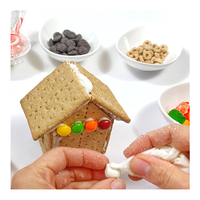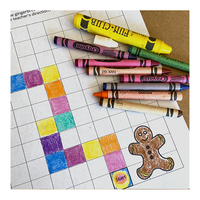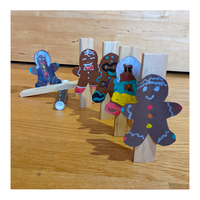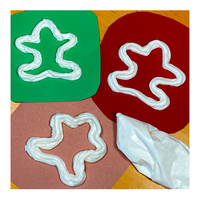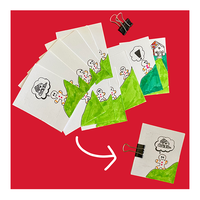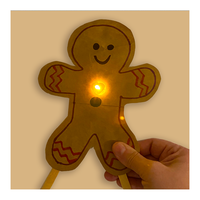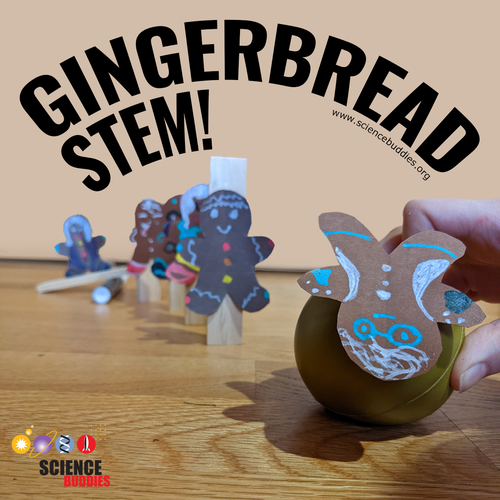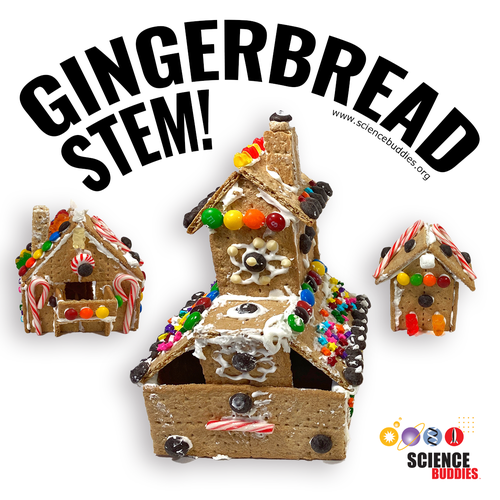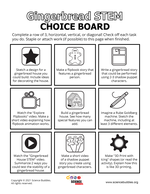Gingerbread STEM!
Gingerbread houses and characters are a great way to capture students' attention in the days leading up to winter break! Shake things up this December with a gingerbread house building STEM challenge in your classroom or try one of these other fun gingerbread-themed science and engineering explorations.
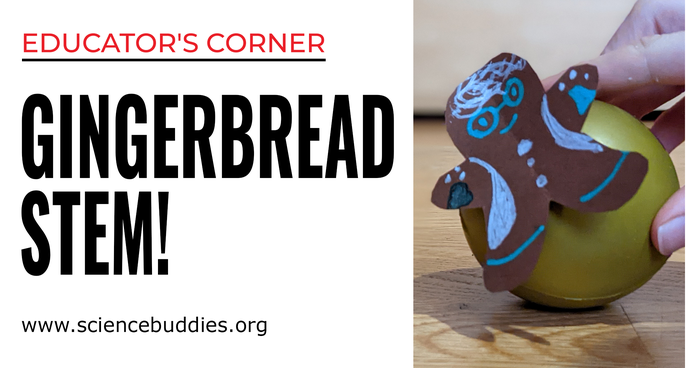
Gingerbread STEM!
Activities involving gingerbread houses and gingerbread people pop up in many classrooms in December and through the winter months. Some educators even plan a "Gingerbread Week." To help spice things up, we've highlighted seven STEM activities below that can add science and engineering to your recipe for gingerbread fun. We've picked a mix of exciting gingerbread-themed explorations. If you already make gingerbread houses with students, we've got suggestions for transforming that into a STEM challenge for all ages. We've also included activities that focus on light, potential and kinetic energy, and circuit building. Of course, many of these experiments can be combined with storytelling and paired with gingerbread-themed storybooks, too! See some of our favorite gingerbread book picks.
Gingerbread STEM: Experiment | Watch Videos | Ask Questions | Dig Deeper | Choice Board | Explore Careers | Read Books
EXPERIMENT: STEM Experiments with a Gingerbread Theme!
Gingerbread House STEM
It is easy to turn building gingerbread houses into a fun STEM challenge that can work at all grade levels! Our Gingerbread House STEM activity (and video) offers suggestions for turning making gingerbread houses into a meaningful engineering design activity. (Tip! You will need royal icing for holding elements together. For the structure, we recommend using graham crackers.)The science: There are a number of math and science angles you can choose to emphasize with gingerbread house building. We've outlined ways you can make this an engineering activity with a focus on structural engineering (the house needs to stand up) and materials science, but you can also experiment with the chemistry of the icing used as the "glue" in building gingerbread houses. See the activity for suggestions for specifying design criteria, adding point values and a materials budget, and using the engineering design process.
Code a Gingerbread Path
Put a gingerbread spin on this paper-based coding activity by having students create a custom path from the starting point to the gingerbread house and then write the directions for someone else to follow. Using only commands that involve moving x number of steps up, down, left, or right, can students successfully guide a gingerbread person along the path? Students can color in their own Candyland-like path on graph paper or on our free templates (large graph for a simple path; small graph for a longer, more complex path). (Tip! You can increase the complexity for older students by allowing them to add in bridges or obstacles to navigate and devising concrete single-block coding directions to match. Students can also color in the area around their path, adding in a forest, a lurking fox, or other creative storytelling elements. For more inspiration about using an activity like this to introduce coding, see paper-based coding activity. See also, 25+ Coding Projects for Beginners and Beyond.)The science: Practicing writing concrete and repeatable directions to navigate from Point A to Point B helps students practice the kind of algorithmic and sequence-oriented thinking used in coding and computer programming. Non-specific (or incorrect) directions can lead to funny mistakes in the activity and will help students begin to understand how precise coding instructions must be for a program to run properly. You can also introduce the concept of debugging as a way to troubleshoot code that doesn't work as expected.
Gingerbread Rube Goldberg Machine
Use craft materials and mini figurines or toy characters as elements in a gingerbread-themed Rube Goldberg machine. The challenge is to design a machine with multiple stages that, once activated, can successfully complete a specific task. The Study Kinetic Energy with a Rube Goldberg Machine lesson helps guide building Rube Goldberg machines as a classroom activity. (Tip! Suggest younger students focus on just a few stages in their machines, like having a ball knock over a few "gingerbread people." This will make the machines smaller and more manageable. Older students can be challenged to build more complicated machines and to also consider twists, turns, and elevation changes between the stages!)The science: Students use the engineering design process to design, build, and test a Rube Goldberg machine to complete a simple task. In the process, they will investigate the relationship between a moving object's mass, speed, and kinetic energy.
Gingerbread Shadow Puppets
Turn learning about light and shadow into a creative STEAM storytelling activity with homemade shadow puppets! Have students make an assortment of gingerbread people and other characters (maybe a fox!) that go along with the Gingerbread STEM theme and storybooks you may be reading (see our suggestions below). (Tip! Have students work in groups to create characters they then use to put on a shadow play with a story they create together. Be sure to record the shadow play if you can!)The science: As students experiment with how to control how the shadows appear on the wall and discover how to make the shadows bigger or smaller, they will be learning about the physics of light and shadow.
3D Printed 'Icing' Gingerbread People
Students can learn more about the process behind 3D printing with the 3D Print with Icing: No 3D Printer Required! activity. With royal icing, students can "print" their own 3D shapes, layer by layer. After the shapes dry, they will be able to pick up their "printed" objects! (Tip! If you use pasteurized egg whites, the creations are safe to eat.)The science: 3D printing is an additive process. Shapes (or "parts") are created as the printer builds the shape layer by layer and adds information to the part with each new layer. Students simulate this additive process in this activity with royal icing (or in the 3D Print with Sand: No 3D Printer Required! activity using sand and glue).
Gingerbread Person Flipbook
Use stacks of index cards (cut in half) to make simple flip books and discover how our brains can perceive sequences of still images as if they are in motion. After exploring with simple colored dots, challenge students to create a flipbook story about a gingerbread person! (Tip! You can talk about cartoons, flipbooks, and stop motion animation at the same time as the concepts are similar in terms of how a viewer sees the resulting "animation." There are many great and long flipbook examples online that you can watch with students as examples of how complex this process can be.)The science: By experimenting with the placement of the image (or dot) on each card and the amount of change in the placement between cards in the sequence, students will better understand animation and the requirements for successful flipbook animation. As an optical illusion, this kind of "apparent animation" is a good example of how our brains may fill in missing information when presented with visual cues.
Light-up Gingerbread People
Paper circuits with copper tape, LEDs, and coin cell batteries can be used to light up a greeting card or a drawing with a gingerbread theme. Or, try making and decorating gingerbread people (or puppets) on a stick and using paper circuits to add a light-up element. (Tip! We used a recycled paper bag for our example. We suggest students focus on lighting just one LED.)The science: Paper circuits are a great way for students to explore introductory circuits using copper tape (or aluminum foil), a coin cell battery, and LEDs. These simple circuits demonstrate the importance of closed circuits.
WATCH: Videos
ASK: Questions
Use these questions to prompt conversation and reflection about the science behind these Gingerbread STEM activities:
- Why do you use royal icing when making gingerbread houses? Does regular frosting or icing work? Why or why not?
- Why is it so important to give very precise directions when writing instructions for a computer? What should you do when you find an error? What is debugging in computer programming?
- How can you make shadow puppets appear bigger or smaller without changing the actual puppet?
- What does energy have to do with how a Rube Goldberg Machine works? What kinds of energy can you identify in a Rube Goldberg machine?
- Why does a flipbook with more pages work better than one with fewer pages?
DIG DEEPER: More Lessons and Activities
For additional lessons and activities related to the activities above, see these curated Teaching Science Units collections and resources:
- 26 Science Projects and Experiments To Teach About Types of Energy
- 13 Activities and Lessons to Teach Potential and Kinetic Energy
- 18 Science Lessons to Teach Circuits
- 13 Lessons to Teach About the Chemistry of Mixtures and Solutions
- 12+ Engineering Challenges for Elementary School
- 16+ Engineering Challenges for Middle School
- 11+ Engineering Challenges for High School
- 4 Ways to Teach Engineering Design
- Imagine Your Story - STEM Activities for Storytellers of All Ages!
CHOICE BOARD: Differentiated Learning
Choice boards offer a flexible learning tool educators can use to supplement classroom instruction. You might try a choice board as part of weekly homework, for extra credit, or for asynchronous and remote learning.
Gingerbread STEM Choice Board
Our Gingerbread STEM Choice Board is a fun way to encourage students to dig a little deeper. With an assortment of tasks that encourage creative responses, synthesis of important concepts, hands-on experimentation, and more, these tasks are designed to spark interest and engagement! (Tip: When presenting this choice board to students, you may want to provide links to referenced videos and activities they may need to watch or read through to fulfill the tasks.)Note: You will need to be logged in to download this free PDF.
EXPLORE: STEM Careers
After trying any of the Gingerbread STEM experiments, students may be inspired to learn more about these science and engineering careers:
- Architect
- Materials Scientist and Engineer
- Mechanical Engineer
- Engineering Manager
- Civil Engineers
- Civil Engineering Technician
- Computer Programmer
- CAD Technician
- Computer Software Engineer
READ: Books
Pair books like these with Gingerbread STEM explorations.
Bookmark Gingerbread STEM!
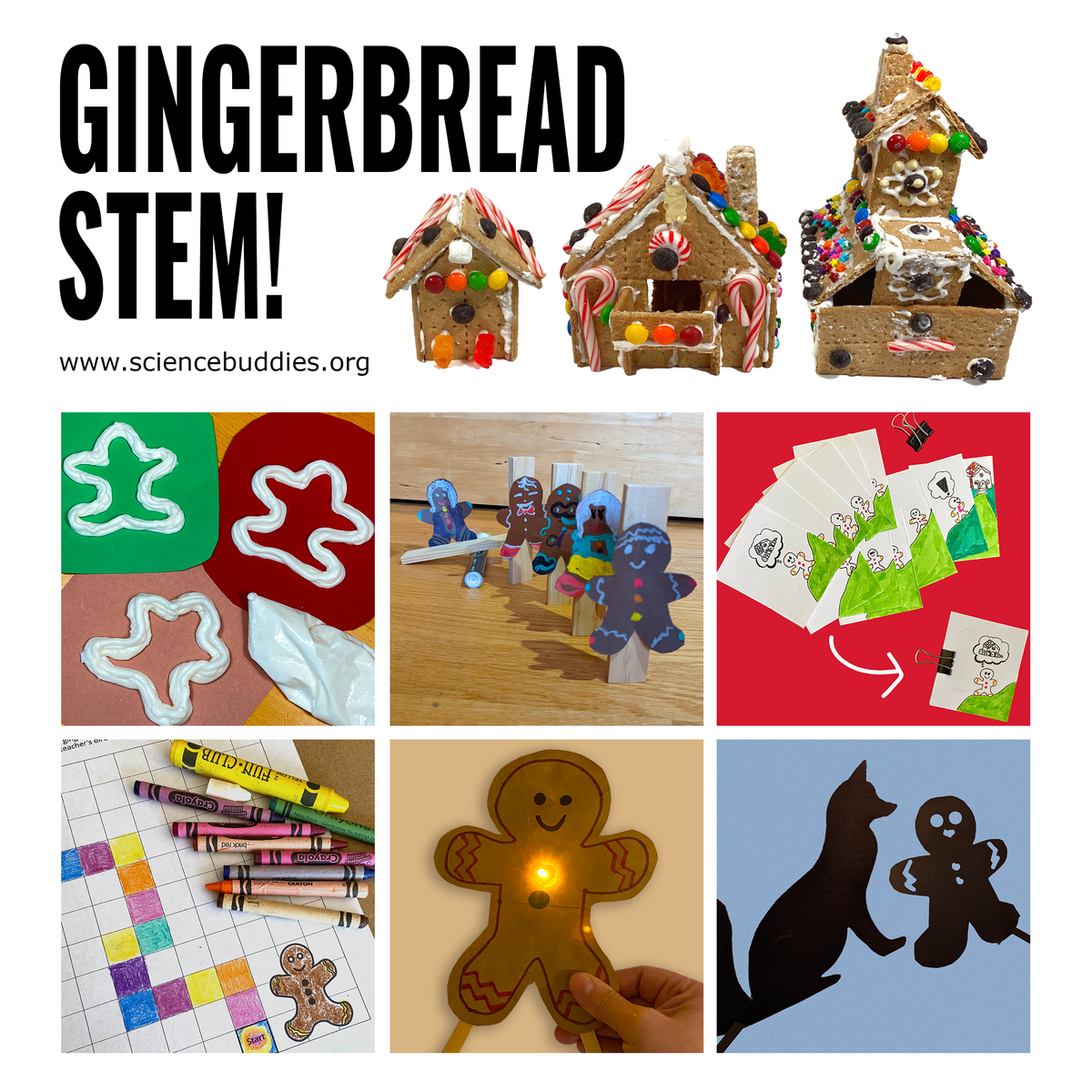
Categories:
You Might Also Enjoy These Related Posts:
- Star Wars Projects for May the 4th Be With You Science
- 25+ Earth Day Science Experiments and Activities
- Arduino Science Projects and Physical Computing
- Spring Science Projects: 26 Science Experiments for Spring
- 25+ Robotics Projects, Lessons, and Activities
- March Madness Basketball Science Projects: Sports Science Experiments
- 15 Density Science Experiments
- 6 Picks for St. Patrick's Day STEM



